Compact Four-Channel Optical Emission Module with High Gain
Abstract
1. Introduction
2. Device Structural Design
3. Simulation Analysis
3.1. Transmission Line Simulation Design
3.2. Co-Simulation of Optoelectronic Chips
3.3. Thermal Simulation Design
3.4. Optical Simulation Design
4. Experimental Results and Discussion
5. Conclusions
Author Contributions
Funding
Institutional Review Board Statement
Informed Consent Statement
Data Availability Statement
Acknowledgments
Conflicts of Interest
References
- Zhu, Y.; Zou, K.; Ruan, X.; Zhang, F. Single Carrier 400G Transmission with Single-Ended Heterodyne Detection. IEEE Photonics Technol. Lett. 2017, 29, 1788–1791. [Google Scholar] [CrossRef]
- Kang, S.-K.; Huh, J.Y.; Lee, J.H.; Lee, J.K. Low-cost and miniaturized 100-Gb/s (2 × 50 Gb/s) PAM-4 TO-packaged ROSA for data center networks. Opt. Express 2018, 26, 6172–6181. [Google Scholar] [CrossRef]
- Rajpal, S.; Goyal, R. A Review on Radio-Over-Fiber Technology-Based Integrated (Optical/Wireless) Networks. J. Opt. Commun. 2017, 38, 19–25. [Google Scholar] [CrossRef]
- He, J.; Lee, J.; Kandeepan, S.; Wang, K. Machine Learning Techniques in Radio-over-Fiber Systems and Networks. Photonics 2020, 7, 105. [Google Scholar] [CrossRef]
- Chen, N.; Okada, M. Toward 6G Internet of Things and the Convergence with RoF System. IEEE Internet Things J. 2021, 8, 8719–8733. [Google Scholar] [CrossRef]
- Farsaei, A.; Wang, Y.; Molavi, R.; Jayatilleka, H.; Caverley, M.; Beikahmadi, M.; Shirazi, A.H.M.; Jaeger, N.; Chrostowski, L.; Mirabbasi, S. A review of wireless-photonic systems: Design methodologies and topologies, constraints, challenges, and innovations in electronics and photonics. Opt. Commun. 2016, 373, 16–34. [Google Scholar] [CrossRef]
- Zhao, Y.; Chen, L.; Aroca, R.A.; Zhu, N.; Ton, D.; Inglis, D.; Doerr, C.R. Silicon Photonic Based Stacked Die Assembly Toward 4×200-Gbit/s Short-Reach Transmission. J. Light. Technol. 2022, 40, 1369–1374. [Google Scholar] [CrossRef]
- Hong, Y.; Li, K.; Lacava, C.; Liu, S.; Thomson, D.J.; Meng, F.; Ruan, X.; Zhang, F.; Reed, G.T.; Petropoulos, P. High-Speed DD Transmission Using a Silicon Receiver Co-Integrated With a 28-nm CMOS Gain-Tunable Fully-Differential TIA. J. Light. Technol. 2021, 39, 1138–1147. [Google Scholar] [CrossRef]
- Li, W.; Zhang, H.; Hu, X.; Lu, D.; Chen, D.; Chen, S.; He, J.; Wang, L.; Qi, N.; Xiao, X.; et al. 100 Gbit/s co-designed optical receiver with hybrid integration. Opt. Express 2021, 29, 14304–14313. [Google Scholar] [CrossRef] [PubMed]
- Kanazawa, S.; Fujisawa, T.; Nunoya, N.; Ohki, A.; Takahata, K.; Sanjoh, H.; Iga, R.; Ishii, H. Ultra-Compact 100 GbE Transmitter Optical Sub-Assembly for 40-km SMF Transmission. J. Light. Technol. 2013, 31, 602–608. [Google Scholar] [CrossRef]
- Bhargava, P.; Kim, T.; Poulton, C.V.; Notaros, J.; Yaacobi, A.; Timurdogan, E.; Baiocco, C.; Fahrenkopf, N.; Kruger, S.; Ngai, T.; et al. Fully Integrated Coherent LiDAR in 3D-Integrated Silicon Photonics/65nm CMOS. In Symposium on VLSI Circuits; IEEE: Piscataway, NJ, USA, 2019; pp. C262–C263. [Google Scholar] [CrossRef]
- Kim, D.-W.; Au, K.Y.; Luo, X.; Ye, Y.L.; Bhattacharya, S.; Lo, G.Q. 2.5D Silicon optical interposer for 400 Gbps electronic-photonic integrated circuit platform packaging. In Proceedings of the IEEE 19th Electronics Packaging Technology Conference (EPTC), Singapore, 6–9 December 2017; pp. 1–4. [Google Scholar] [CrossRef]
- Aoki, T.; Sekiguchi, S.; Simoyama, T.; Tanaka, S.; Nishizawa, M.; Hatori, N.; Sobu, Y.; Sugama, A.; Akiyama, T.; Hayakawa, A.; et al. Low-Crosstalk Simultaneous 16-Channel × 25 Gb/s Operation of High-Density Silicon Photonics Optical Transceiver. J. Light. Technol. 2018, 36, 1262–1267. [Google Scholar] [CrossRef]
- Zhang, Z.; Liu, Y.; Wang, J.; Bai, J.; Yuan, H.; Wang, X.; Liu, J.; Zhu, N. Three-Dimensional Package Design for Electro-Absorption Modulation Laser Array. IEEE Photonics J. 2016, 8, 2700912. [Google Scholar] [CrossRef]
- Zhang, Z.Z.Z.; Liu, Y.L.Y.; An, J.A.J.; Zhang, Y.Z.Y.; Zhao, Z.Z.Z.; Liu, J.L.J.; Zhu, N.Z.N. 112 Gbit/s transmitter optical subassembly based on hybrid integrated directly modulated lasers. Chin. Opt. Lett. 2018, 16, 062501. [Google Scholar] [CrossRef]
- Zhao, Z.; Wang, J.; Han, X.; Zhang, Z.; Liu, J. Ultra-compact four-lane hybrid-integrated ROSA based on three-dimensional microwave circuit design. Chin. Opt. Lett. 2019, 17, 030401. [Google Scholar] [CrossRef]
- Yun, S.-J.; Han, Y.-T.; Kim, S.-T.; Shin, J.-U.; Park, S.-H.; Lee, D.-H.; Lee, S.-Y.; Baek, Y. Compact Hybrid-Integrated 4 × 80-Gbps TROSA Module Using Optical Butt-Coupling of DML/SI-PD and Silica AWG Chips. J. Light. Technol. 2021, 39, 2468–2475. [Google Scholar] [CrossRef]
- Jin, Y.; Xie, Y.; Zhang, Z.; Lu, D.; Yang, M.; Li, A.; Meng, X.; Qu, Y.; Li, L.; Shi, N.; et al. 4 × 112 Gb/s hybrid integrated silicon receiver based on photonic-electronic co-design. Chin. Opt. Lett. 2024, 22, 082501. [Google Scholar] [CrossRef]
- Benzoni, A.; Downie, M.; Kasper, B.; Paslaski, J.; Peral, E.; Wu, X.M.; Schrans, T.; Swass, M.; Tsai, C.; Ury, I. High speed, high performance laser module. In Proceedings of the 50th Electronic Components and Technology Conference (ECTC), Las Vegas, NV, USA, 21–24 May 2000; pp. 465–468. [Google Scholar] [CrossRef]
- Connelly, M.J. Semiconductor Optical Amplifiers; Kluwer Academic: Dordrecht, The Netherlands, 2002. [Google Scholar]
- Agrawal, G.P. Fiber-Optic Communication Systems; Wiley: Hoboken, NJ, USA, 2010. [Google Scholar]
- Pozar, D.M. Microwave Engineering; Wiley: Hoboken, NJ, USA, 2011. [Google Scholar]
- Han, W.; Rensing, M.; Wang, X.; Yang, H.; Peters, F.H.; O’Brien, P. Investigation of the Packaging-Induced RF Attenuations and Resonances in a Broadband Optoelectronic Modulator Module. J. Light. Technol. 2012, 30, 2610–2617. [Google Scholar] [CrossRef]
- Cox, C. High-performance fiber-optic links for microwave applications. In Proceedings of the IEEE MTT-S International Microwave Symposium Digest, Atlanta, GA, USA, 14–18 June 1993; pp. 719–722. [Google Scholar] [CrossRef]
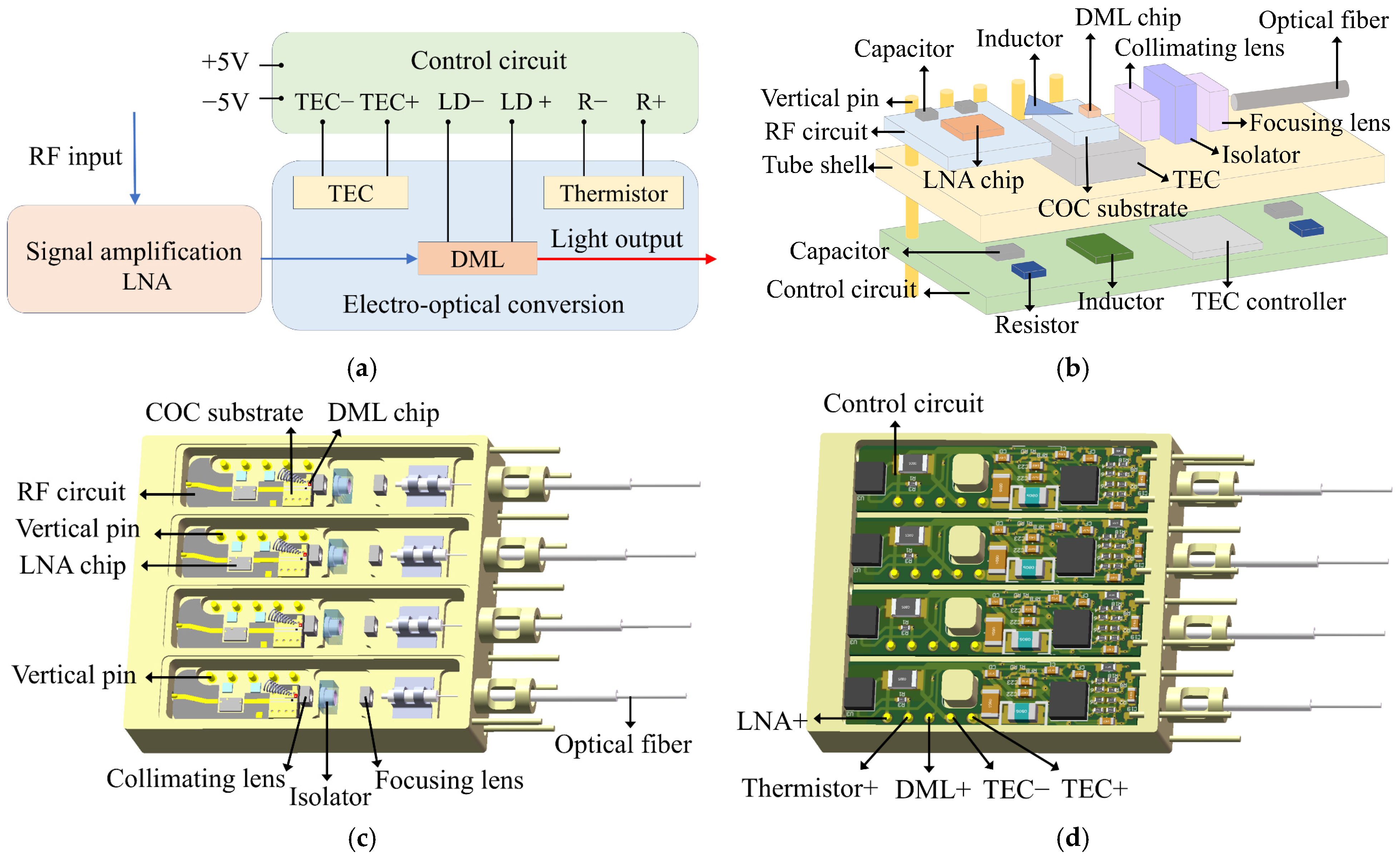
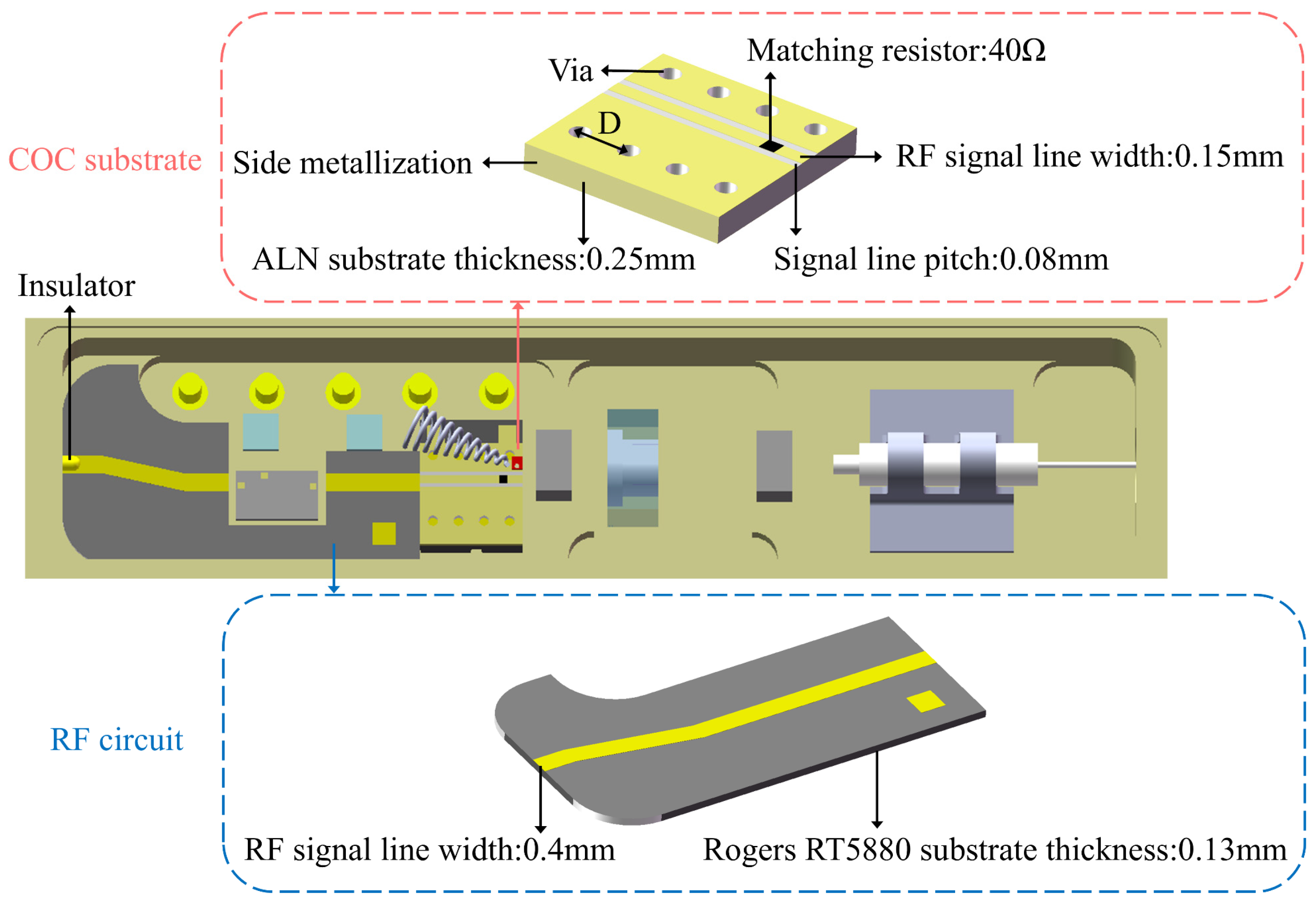

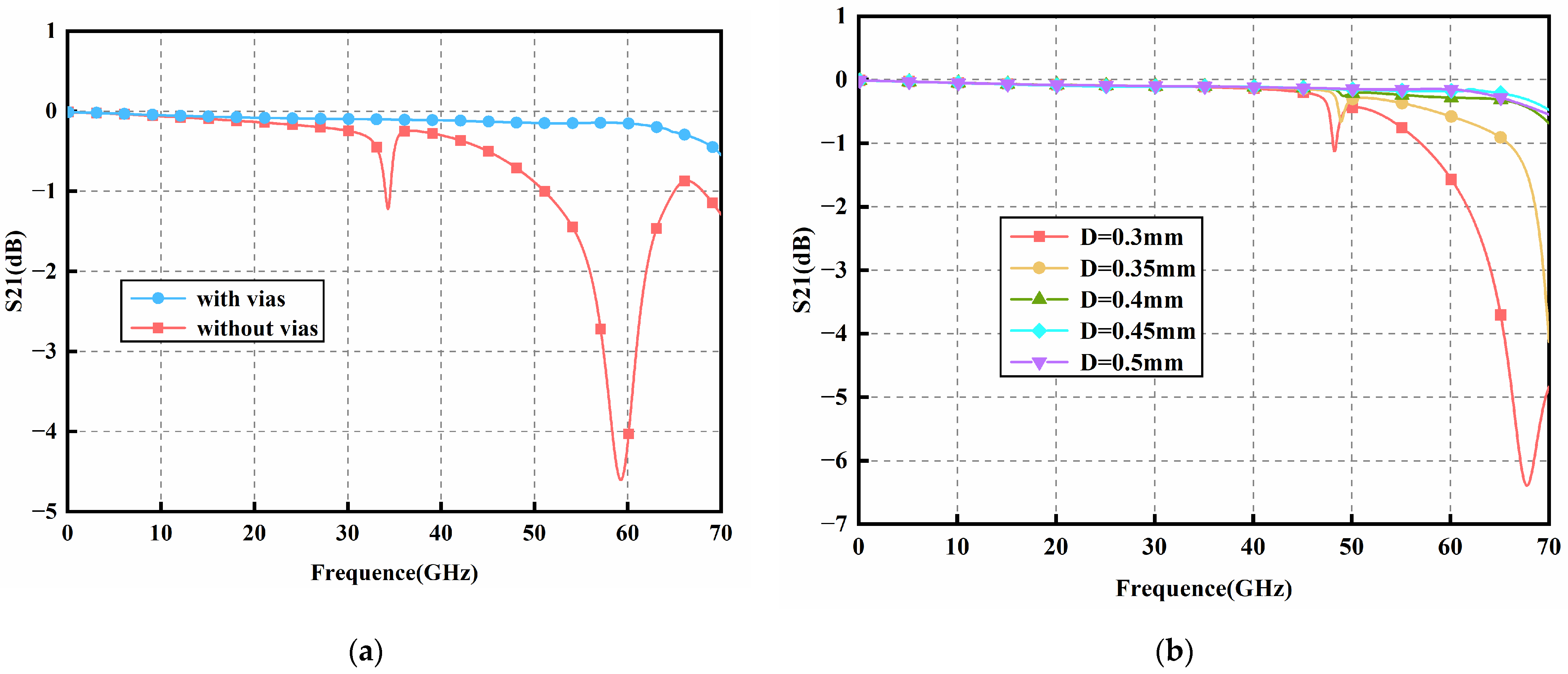


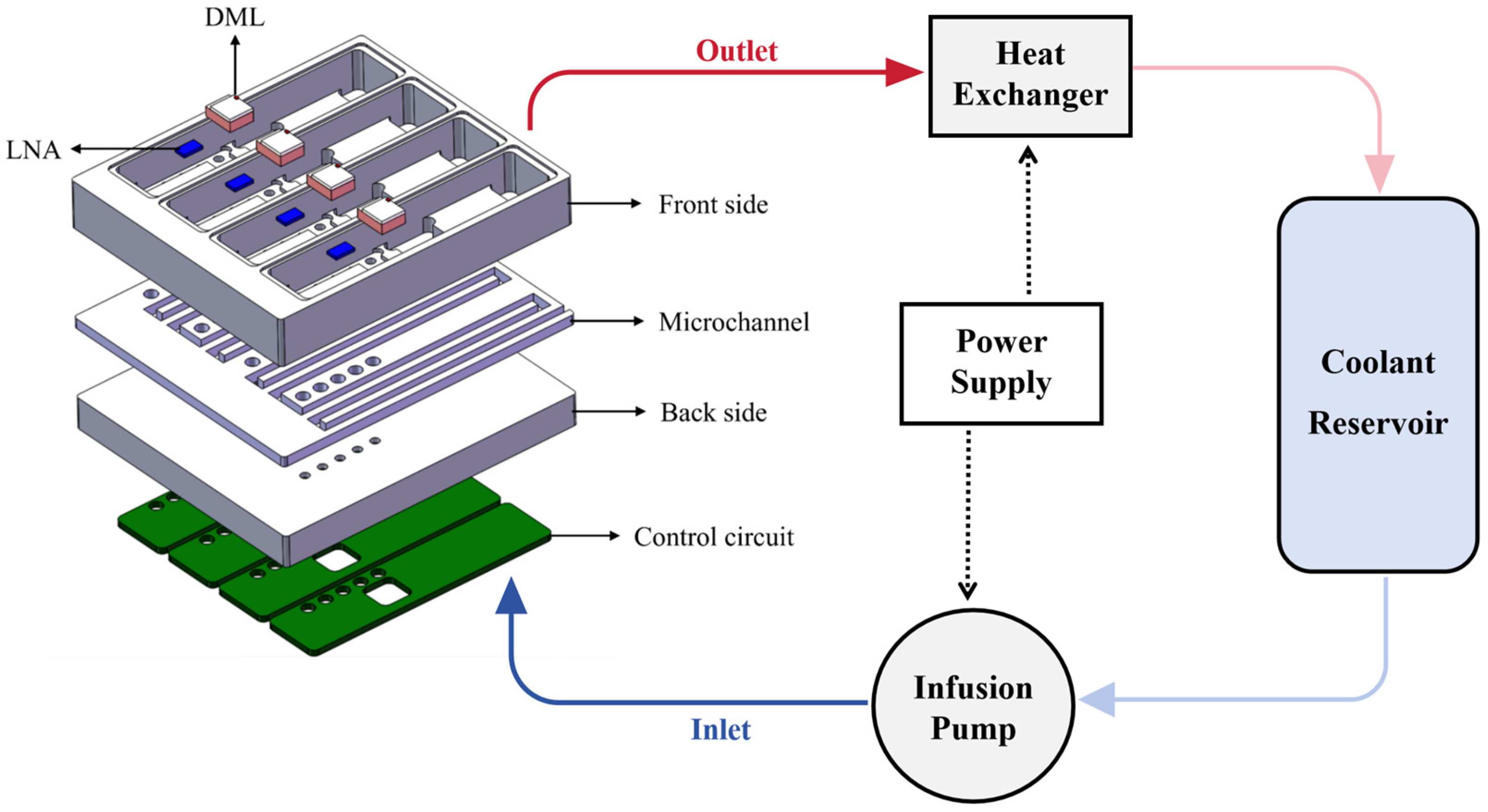
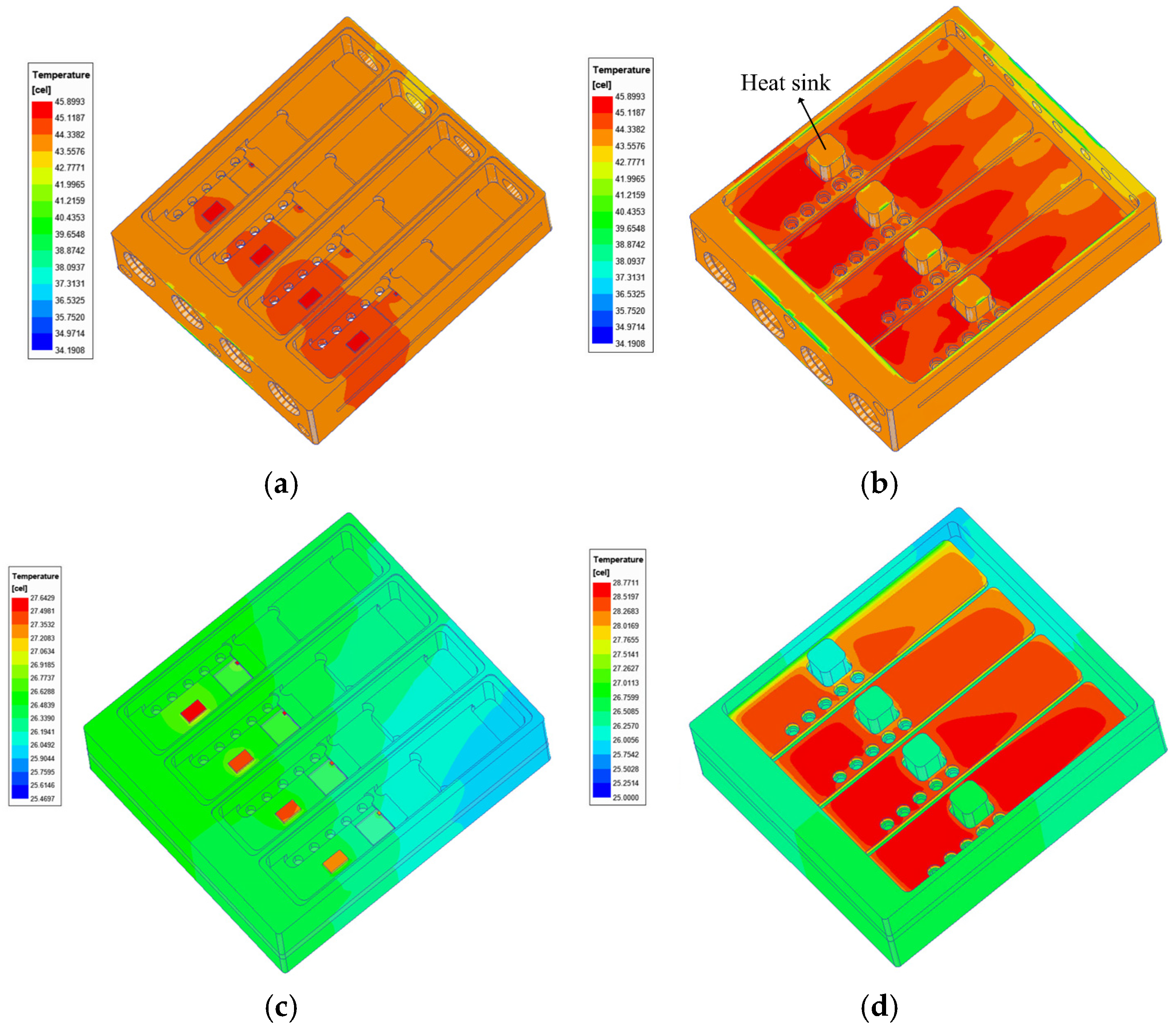

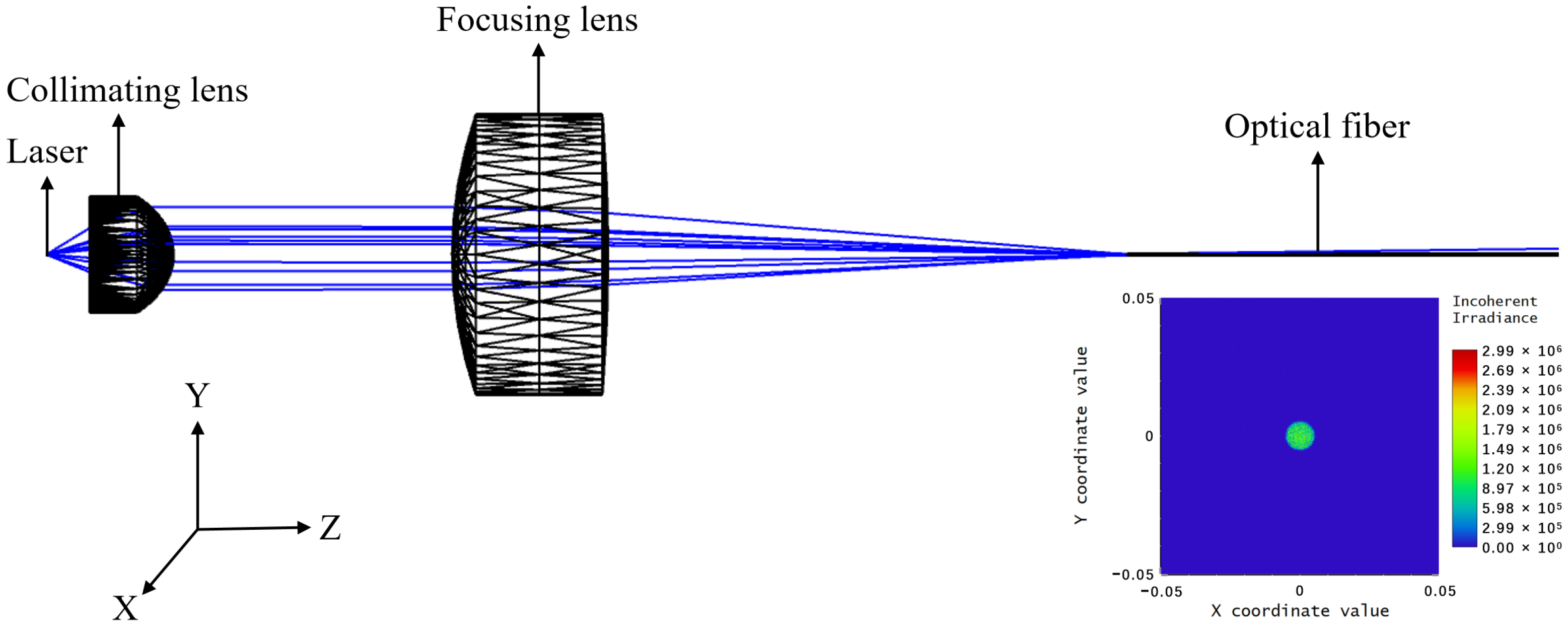

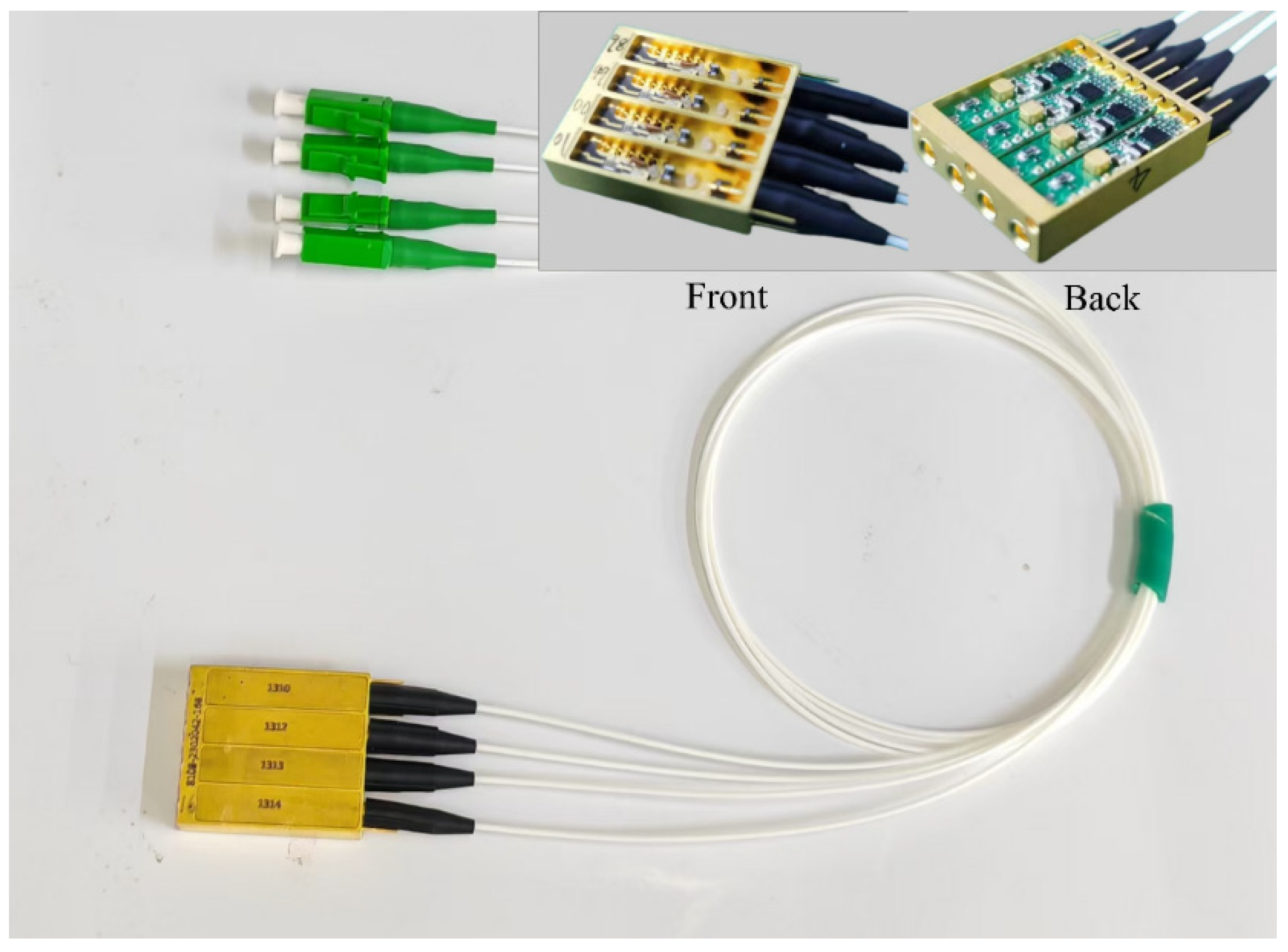
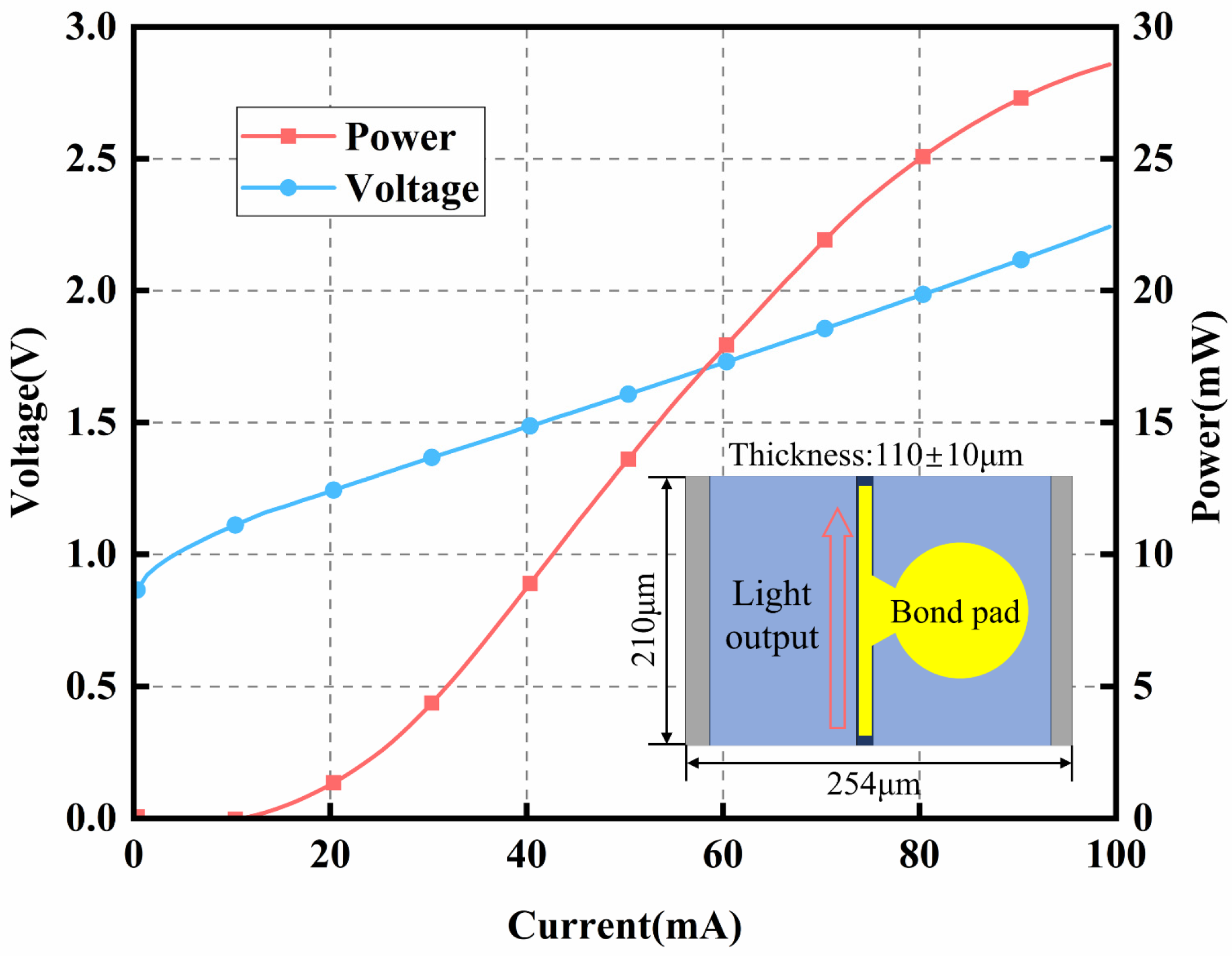
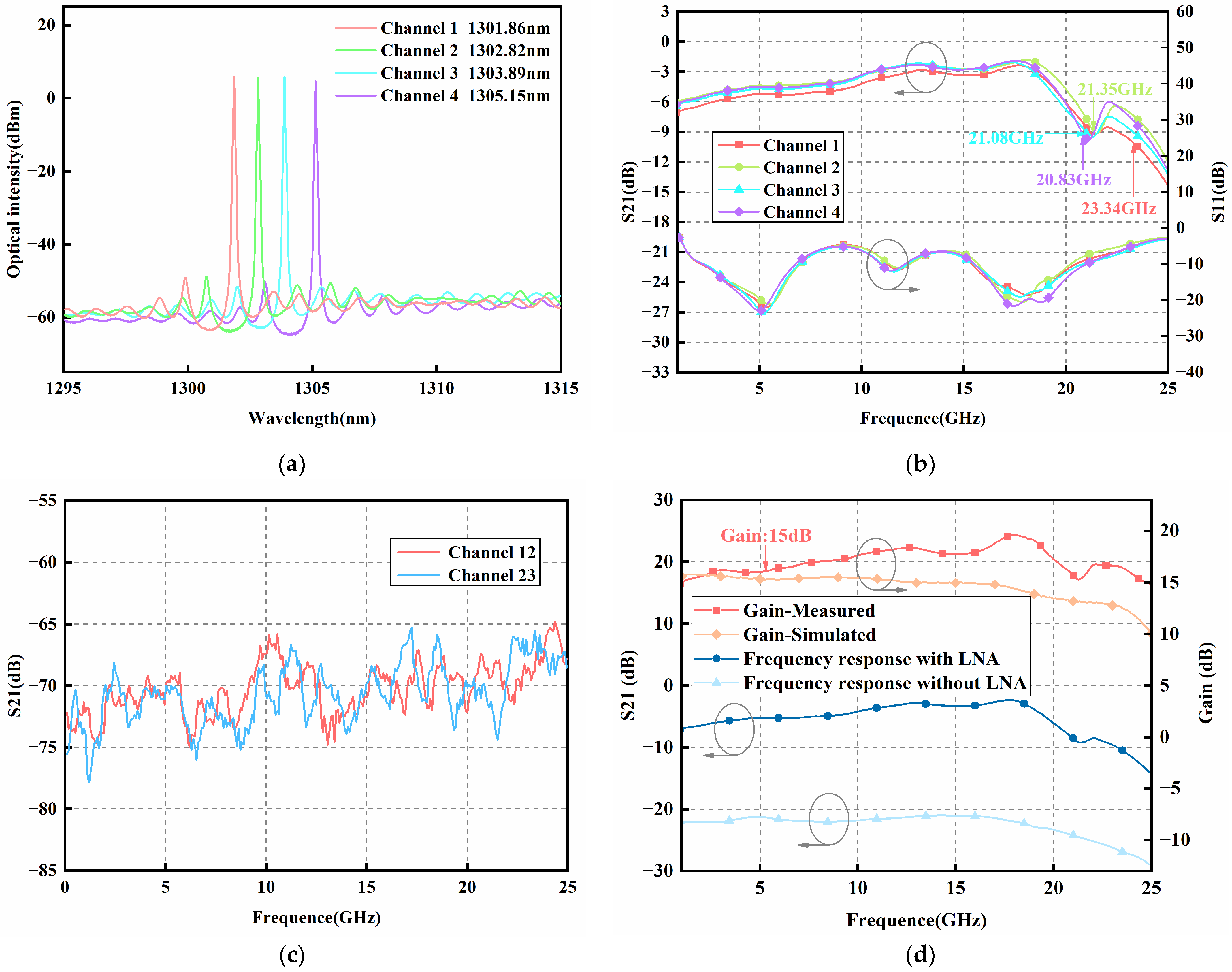


| Ca | La | Ra | Rd | Cc | Rc | Cp | Lp | Rp | R |
|---|---|---|---|---|---|---|---|---|---|
| 76.8 | 0.81 | 6.69 | 0.18 | 3.39 | 4.83 | 98.2 | 0.22 | 0.97 | 40 |
| pF | pH | mΩ | mΩ | pF | Ω | fF | nH | Ω | Ω |
| Frequency (GHz) | Noise Figure (dB) | Frequency (GHz) | Noise Figure (dB) |
|---|---|---|---|
| 4 | 22.82 | 12 | 25.58 |
| 6 | 23.34 | 14 | 26.02 |
| 8 | 24.37 | 16 | 27.18 |
| 10 | 25.25 | 18 | 29.49 |
Disclaimer/Publisher’s Note: The statements, opinions and data contained in all publications are solely those of the individual author(s) and contributor(s) and not of MDPI and/or the editor(s). MDPI and/or the editor(s) disclaim responsibility for any injury to people or property resulting from any ideas, methods, instructions or products referred to in the content. |
© 2025 by the authors. Licensee MDPI, Basel, Switzerland. This article is an open access article distributed under the terms and conditions of the Creative Commons Attribution (CC BY) license (https://creativecommons.org/licenses/by/4.0/).
Share and Cite
Dang, X.; Li, L.; Chen, M.; Hu, Z.; Yang, T.; Zhao, Z.; Zhang, Z. Compact Four-Channel Optical Emission Module with High Gain. Photonics 2025, 12, 425. https://doi.org/10.3390/photonics12050425
Dang X, Li L, Chen M, Hu Z, Yang T, Zhao Z, Zhang Z. Compact Four-Channel Optical Emission Module with High Gain. Photonics. 2025; 12(5):425. https://doi.org/10.3390/photonics12050425
Chicago/Turabian StyleDang, Xiying, Linyi Li, Man Chen, Zijian Hu, Tianyu Yang, Zeping Zhao, and Zhike Zhang. 2025. "Compact Four-Channel Optical Emission Module with High Gain" Photonics 12, no. 5: 425. https://doi.org/10.3390/photonics12050425
APA StyleDang, X., Li, L., Chen, M., Hu, Z., Yang, T., Zhao, Z., & Zhang, Z. (2025). Compact Four-Channel Optical Emission Module with High Gain. Photonics, 12(5), 425. https://doi.org/10.3390/photonics12050425




